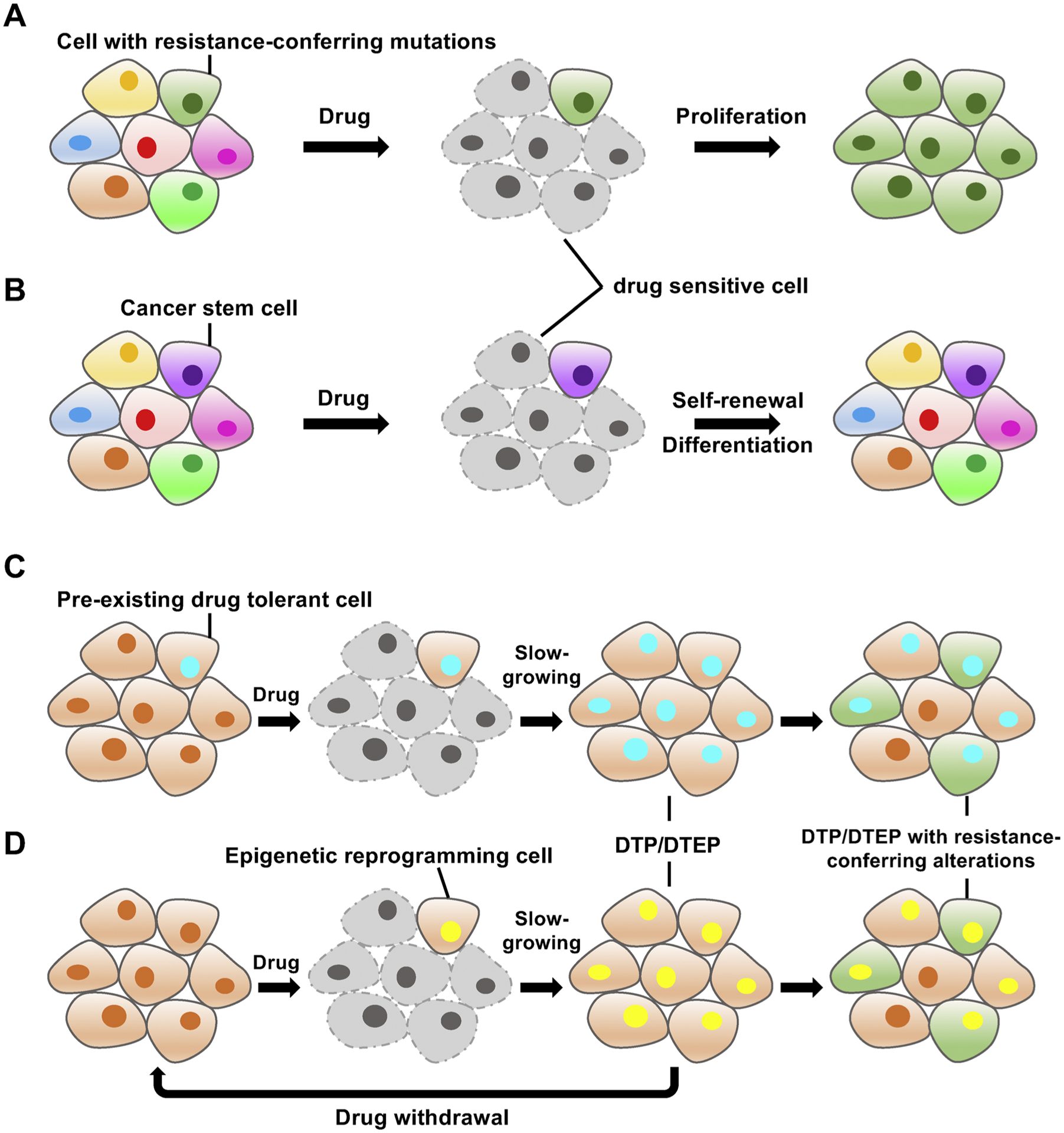Fig. 2.

Representative molecular mechanisms underlying drug resistance.
A. Subclones that carry resistance-conferring mutation(s) within a heterogeneous cancer population survive after drug exposure and outgrow to dominate the entire cancer population. B. Cancer stem cells are intrinsically resistant to drug treatment and have the ability to self-renew and differentiate into the bulk of the tumor mass. C–D. A rare group of cancer cells, either with a pre-existing drug-tolerant epigenetic state (C) or evolved through epigenetic reprogramming (D), become drug-tolerant persisters (DTPs) or drug-tolerant expanded persisters (DTEPs) after drug treatment. These DTPs or DTEPs can return to the drug-sensitive state after drug withdrawal or gain permanent resistance by acquiring additional genetic or epigenetic alterations that confer resistance to therapy.
